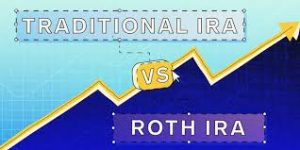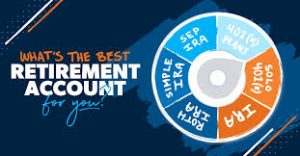Imagine achieving financial independence years or even decades before your peers. According to recent studies, 57% of Americans dream of early retirement, yet only 4% successfully retire before age 55.
The good news? Early retirement isn’t just for high-income earners or those who inherited wealth. With the right early retirement strategies and disciplined execution, middle-income earners can successfully navigate the path to financial independence.
This comprehensive guide will break down proven early retirement strategies that have helped thousands of average income earners achieve their dreams of financial freedom. Whether you’re making $50,000 or $80,000 annually, these methods can work for you if you’re willing to commit to them.
Skale Money Key Takeaways
Before diving deep into each strategy, here are the essential points you’ll learn:
- Early retirement is achievable for middle-income earners through a combination of smart saving and strategic investing
- The 4% rule needs modification for modern early retirement planning
- Debt elimination should be prioritized before aggressive saving
- Multiple income streams are crucial for sustainable early retirement
- Geographic arbitrage can significantly accelerate your retirement timeline
- Tax optimization can save hundreds of thousands over your retirement journey
Table of Contents
Understanding Early Retirement Fundamentals
Early retirement means different things to different people. For some, it’s completely leaving the workforce; for others, it’s achieving financial independence while continuing part-time work.
Understanding these distinctions is crucial for developing your personal early retirement strategy. The traditional 4% rule—withdrawing 4% of your retirement savings annually—has been a cornerstone of retirement planning.
However, modern early retirees often need to adjust this rule based on their specific circumstances. Types of early retirement include:
- Traditional Retirement: Complete exit from the workforce
- Semi-retirement: Reduced work hours with passive income
- Coast FIRE: Full-time work until traditional retirement age, but retiring early from retirement savings
- Barista FIRE: Part-time work primarily for health benefits
| Type | Description | Income Needed | Lifestyle Impact |
| Traditional | No work income | 25-30x expenses | Most restrictive |
| Semi-retirement | Part-time income | 20x expenses | Moderate flexibility |
| Coast FIRE | Full salary until retirement | 10-15x expenses | Most flexible |
| Barista FIRE | Part-time with benefits | 15-20x expenses | Good balance |
Strategy 1: Aggressive Debt Elimination
Before you can build significant wealth, you need to eliminate the wealth-draining force of high-interest debt. This strategy forms the foundation of successful early retirement strategies for middle-income earners.
The debt avalanche method focuses on eliminating your highest-interest debt first while maintaining minimum payments on other debts. This scientifically proven approach saves you the most money in interest payments.
Priority order for debt elimination:
- Credit cards (average APR 18-25%)
- Personal loans (average APR 10-28%)
- Student loans (average APR 4-7%)
- Mortgage (average APR 3-6%)
Success Story: Sarah, a middle school teacher making $52,000 annually, eliminated $48,000 in debt over three years by following this strategy, enabling her to then redirect $1,500 monthly toward investments.
Strategy 2: Optimizing Income Streams
While controlling expenses is important, increasing your income provides more leverage for early retirement planning. Middle-income earners should focus on both primary job optimization and developing additional income streams.
Primary job optimization techniques:
- Regular salary negotiations (aim for 10-15% increases every 2-3 years)
- Professional certification acquisition
- Strategic job changes (can increase salary by 20-30%)
- Performance-based bonus maximization
| Age Range | Primary Income | Side Income | Total Target |
| 25-30 | $50,000-$65,000 | $5,000-$10,000 | $55,000-$75,000 |
| 31-35 | $65,000-$80,000 | $10,000-$20,000 | $75,000-$100,000 |
| 36-40 | $80,000-$95,000 | $20,000-$30,000 | $100,000-$125,000 |
| 41-45 | $95,000-$110,000 | $30,000-$40,000 | $125,000-$150,000 |
Strategy 3: Strategic Investment Planning
Investment returns will likely generate the majority of your retirement wealth. Understanding and implementing proper investment strategies is crucial for middle-income earners pursuing early retirement.
Core investment principles:
- Focus on low-cost index funds
- Maintain appropriate asset allocation
- Regular rebalancing
- Dollar-cost averaging
Asset allocation guidelines:
- Stocks: 120 minus your age
- Bonds: Your age minus 20
- Alternative investments: 5-15% maximum
- Real estate: 0-30% based on local market conditions
Strategy 4: Tax Optimization Techniques
Smart tax planning can save early retirees hundreds of thousands of dollars over their lifetime. Middle-income earners have several powerful tax optimization tools at their disposal.
Key tax strategies:
- Maximize traditional 401(k) contributions during peak earning years
- Utilize Roth IRA conversion ladders
- Leverage HSA triple tax advantages
- Strategic tax-loss harvesting
Account prioritization order:
- 401(k) up to employer match
- HSA if available
- Roth IRA
- Additional 401(k) contributions
- Taxable brokerage accounts
Strategy 5: Lifestyle Design for Early Retirement
Achieving early retirement requires intentional lifestyle choices. The key is maximizing life satisfaction while minimizing expenses—without feeling deprived.
Areas for optimization:
- Housing: Aim for 25% or less of take-home pay
- Transportation: Consider one-car households or electric vehicles
- Food: Meal planning and strategic grocery shopping
- Entertainment: Focus on value-based activities
Quality of life maintenance tips:
- Develop low-cost hobbies
- Build a supportive community
- Focus on experiences over possessions
- Regular lifestyle audits
Strategy 6: Geographic Arbitrage
Location can dramatically impact your path to early retirement. Geographic arbitrage—taking advantage of cost-of-living differences—is one of the most powerful early retirement strategies available to middle-income earners.
| Location Type | Housing | Healthcare | Overall Cost |
| Urban Core | $2,500/mo | $500/mo | $5,000/mo |
| Suburban | $1,800/mo | $450/mo | $4,000/mo |
| Rural | $1,200/mo | $400/mo | $3,000/mo |
| International | $800/mo | $200/mo | $2,000/mo |
Strategy 7: Building Multiple Income Streams
Diversifying your income sources provides security and accelerates wealth building. Successful early retirees typically have 3-7 income streams.
Passive income opportunities:
- Dividend-paying stocks
- Rental properties
- Online businesses
- Royalties
- Peer-to-peer lending
Active income opportunities:
- Consulting
- Freelancing
- Part-time professional work
- Teaching/tutoring
Strategy 8: Protection and Insurance Planning
Protecting your wealth is as important as building it. A solid insurance strategy prevents financial setbacks from derailing your early retirement plans.
Essential coverage types:
- Term life insurance
- Disability insurance
- Health insurance
- Umbrella liability insurance
Emergency fund guidelines:
- Single income: 6-9 months of expenses
- Dual income: 3-6 months of expenses
- Self-employed: 9-12 months of expenses
Strategy 9: Social Security Optimization
While Social Security shouldn’t be your primary retirement funding source, optimizing your benefits can provide valuable supplemental income.
Key considerations:
- Early filing reduces lifetime benefits by up to 30%
- Delayed filing increases benefits by 8% annually
- Spousal benefit coordination
- Tax implications of various filing strategies
Strategy 10: Maintaining Financial Independence
Reaching early retirement is only half the battle—maintaining it requires ongoing attention and adjustment.
Maintenance strategies:
- Annual portfolio rebalancing
- Regular expense audits
- Inflation protection measures
- Flexible withdrawal strategies
Implementation Timeline and Milestones
Your path to early retirement should follow a clear timeline with specific milestones:
Year 1-2:
- Eliminate high-interest debt
- Build emergency fund
- Start retirement accounts
Year 3-5:
- Maximize retirement contributions
- Develop additional income streams
- Optimize tax strategies
Year 5-10:
- Build investment portfolio
- Implement geographic arbitrage if desired
- Fine-tune retirement numbers
Conclusion
Early retirement strategies for middle-income earners require dedication, planning, and consistent execution. By implementing these ten strategies systematically, you can achieve financial independence sooner than you might think.
Remember, the journey to early retirement is a marathon, not a sprint—focus on sustainable progress over quick wins.
Frequently Asked Questions
How much do I need to earn to implement these strategies?
These strategies can be implemented with annual household incomes between $50,000-$100,000, though higher incomes will accelerate the timeline.
What’s the minimum time frame for early retirement?
Most middle-income earners can achieve early retirement in 10-15 years with disciplined implementation of these strategies.
Can I still retire early if I start late?
Yes, though you may need to adjust your strategy mix and potentially extend your timeline or consider semi-retirement options.
How do I maintain health insurance before Medicare eligibility?
Options include private insurance, health sharing ministries, part-time work with benefits, or international healthcare options.
What are the biggest risks to early retirement plans?
Major risks include market downturns, healthcare costs, inflation, and sequence of returns risk. Proper planning and diversification help mitigate these risks.
How do I know if I’m on track?
Track your savings rate (aim for 40-50% of income), net worth growth (target 15-20% annually), and passive income development (should cover basic expenses before retirement).
Author: Cosmas Mwirigi
Cosmas Mwirigi is an established freelance writer with over five years of experience and the founder of Skalemoney.com. Cosmas Mwirigi has been published on PV-Magazine, Slidebean, Bridge Global, Casinos.com, Gambling.com, and Reverbico among many other websites.
Cosmas Mwirigi is an expert writer in iGaming, B2B, SaaS, Finance, digital marketing and Solar renewable energy. To contact him for his services, connect with him on his LinkedIn
![]()




